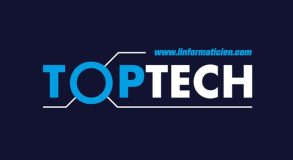Dot-brand TLDs may be among the Internet domains most coveted by companies since their launch, but that doesn’t make them any less costly. 185,000 dollars, more specifically. The sum businesses had to pay during the ICANN opening round in 2012 to submit their application. A 6-figure initial entry cost, plus almost 50,000 dollars in annual management fees after the launch of the domain, not to mention the expenses linked to in-house preparation and roll-out costs.
Although this sum may seem like a hammer blow to potential applicants, it is important to remember that a brand TLD should be seen as an investment rather than solely an acquisition. With the aid of a detail-oriented, relevant and long-term project, a registry company is uniquely positioned to substantiate its entire digital strategy while also achieving significant economies of scale on numerous fronts.
A naturally more constructive and less pricey defence strategy on the Web
The rise of the Internet brings with it the need for heightened vigilance when it comes to the use of a brand online. In this respect, the application of a naming strategy is not only key to protecting against the risks of certain malicious activities like cybercrime and typosquatting, but also extremely useful in articulating a digital fingerprint while standing out. Daily surveillance of domain names, anticipation via the registration of alternative spellings, time-consuming and costly recovery negotiations… These actions require vast amounts of time, technical skills and money for any organisation.
Becoming a brand TLD holder amounts to becoming the sole owner of the domain. As the registry company alone sets the rules for the use of its dot-brand, it gains an exclusive digital territory now and for the future. Which means that it can register the domain names of its choice without ever worrying about their availability, or the classic array of alternatives to register for a solely defensive use. Its domain name portfolio is in turn less substantial than if it was not the holder of its own dot-brand due to the reference value reflected by its dot-brand digital environment. At the same time, and although there is by no means any claim that this principle of ‘exclusivity’ means that the company can let down its guard entirely on the vigilance front, its surveillance efforts and therefore costs will be nonetheless naturally lower. This represents considerable time and money savings made gradually, and which could be assigned to other tasks.
Substantial conversion strategy support thanks to digital technology
According to the International Telecommunication Union (ITU)1, the number of people now connected to the Internet stands at around 5 billion worldwide, and at 54 million in France according to Médiamétrie2. And FEVAD3 estimated the number of online shoppers in France at the end of 2021 at 42 million. While use of the Web has become widespread, e-commerce has become almost a mainstream practice. For a brand, standing out online is de facto no longer optional.
Custom TLDs can provide a convenient and relevant response to the challenges that this presents. By stemming all of its spaces and e-services from a branded denominator, a brand can officialise its online presence in a glance and thus build trust while reassuring its audiences, who will automatically recognise that they are in an ‘official’ and secure territory. A good first impression, in other words, from which a close commercial relationship can grow.
Thanks to the possibility to develop dedicated digital spaces via powerful and memorable URLs like loyalty.brand, partnerships.brand or press.brand, for example (which can also be adapted into any other language), the registry company can reach all of its targets in a clear and innovative way while optimising the user journey; a real advantage in an age where time is an increasingly rare commodity among Internet users. A means to increase the company’s attraction, conversion and retention using an authentic, consistent and modern naming strategy.
Powerful communication that pays off
Optimising a naming strategy is a great way to boost visibility. By enabling short, custom URLs that include unambiguous key words, dot-brand TLDs help improve a brand’s search engine optimisation, the costs of which can generally escalate rapidly and which can take months or even years to provide good results.
Over time, a dot-brand becomes a communication tool in its own right for the holder brand, constantly brought to the forefront of each Internet address which in turn can be promoted on all on and offline media. By enhancing legibility, identification and memorisation, dot-brand TLDs act as an important lever for any advertising campaign, which will naturally gain in scope. As an example, who wouldn’t immediately associate “Zéro tracas, zéro blabla” with MMA (www.zerotracas.mma) or “Qui est le moins cher” with Leclerc (www.quiestlemoinscher.leclerc)? Dot-brand TLDs thus pave the way for the ultimate branding, whether in terms of corporate communication or product communication.
Compared to the time and money generally allocated to marketing, communication and surveillance, the acquisition cost of a custom TLD should be put into perspective and seen as an investment. Accompanied by a well-honed strategy, a dot-brand can shape and enrich a broader development strategy, with an entry cost largely offset by its ROI. To put it simply, the more extensively a dot-brand is used, the better the return on investment.
[1] https://www.itu.int/hub/2021/11/facts-and-figures-2021-2-9-billion-people-still-offline/



